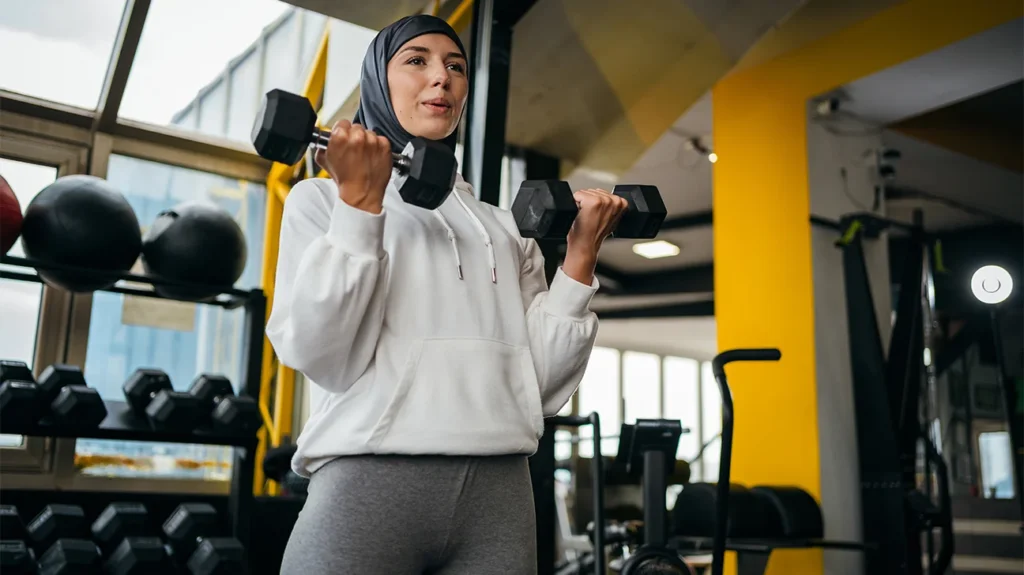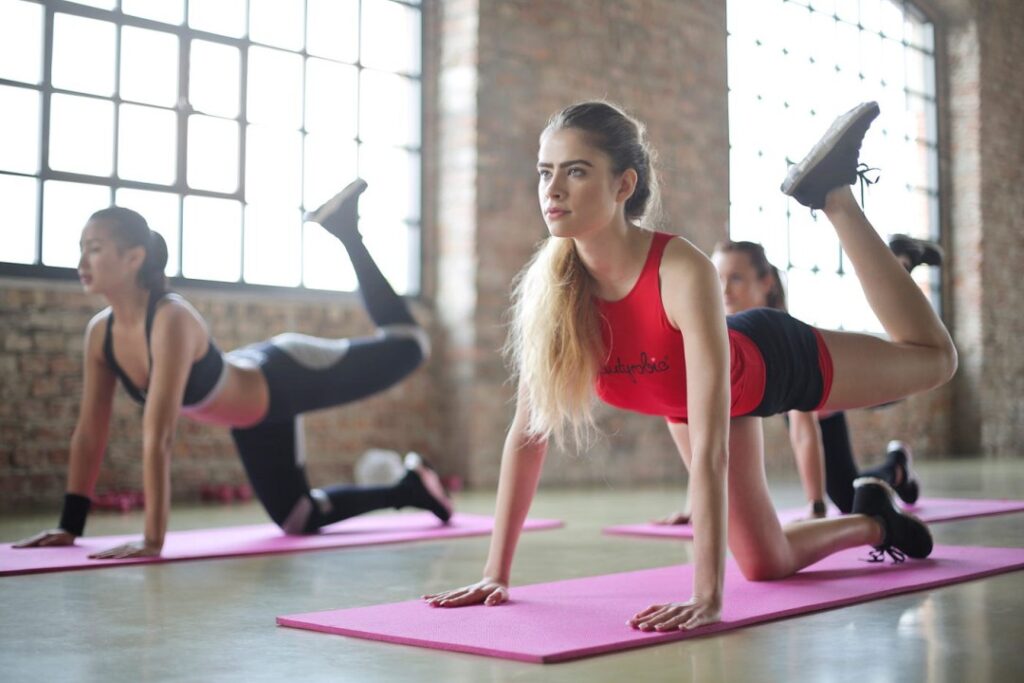Fitness and wellness encompass physical, mental, and emotional health, promoting a long, happy life. Achieving these goals involves a balanced approach to exercise, nutrition, and lifestyle habits.
Staying fit and healthy is essential for a long and happy life. Fitness and wellness go beyond just physical exercise; they also include mental and emotional health.
This guide will help you understand what it means to be fit for life and provide practical tips to achieve your fitness and wellness goals.
What Is Fitness?

Fitness refers to the ability to perform daily activities without getting tired. It involves a combination of strength, endurance, flexibility, and balance. Being fit can lead to a better quality of life and reduced risk of chronic diseases.
Types of Fitness:
- Cardiovascular Fitness: This is the ability of your heart and lungs to supply oxygen to your body during physical activity. Activities like running, swimming, and cycling improve cardiovascular fitness.
- Muscular Strength: This refers to how much force your muscles can produce. Weight lifting and bodyweight exercises help build muscular strength.
- Muscular Endurance: This is the ability of your muscles to perform repeated movements over time without getting tired. Activities like push-ups and squats can improve muscular endurance.
- Flexibility: This is the range of motion in your joints. Stretching exercises, such as yoga, can help improve flexibility.
- Balance: This refers to the ability to maintain stability while standing or moving. Activities like tai chi and balance exercises are beneficial.
What Is Wellness?
Wellness is a holistic approach to health that includes physical, mental, and emotional well-being. It involves making choices that promote a healthy lifestyle. The key components of wellness include:
- Physical Wellness: This includes regular exercise, a balanced diet, and maintaining a healthy weight.
- Emotional Wellness: This involves understanding and managing your feelings. It includes coping with stress, building self-esteem, and seeking help when needed.
- Social Wellness: This refers to building and maintaining healthy relationships with others. It includes spending time with family and friends and being part of a community.
- Spiritual Wellness: This involves finding purpose and meaning in life. It can include practices like meditation, prayer, or spending time in nature.
- Intellectual Wellness: This includes engaging in creative and mentally stimulating activities. It can involve reading, learning new skills, or pursuing hobbies.
Also read: 4 Pistons Calipers That Will Fit Crown Vic – A Comprehensive Guide!
Benefits of Fitness and Wellness:
Improved Physical Health:
Regular exercise and a nutritious diet significantly lower the risk of chronic diseases, such as heart disease, diabetes, and obesity. Staying active not only helps maintain a healthy weight but also enhances the immune system, making the body more resilient to infections. By prioritizing physical health, individuals can enjoy a better quality of life and greater overall well-being.
Enhanced Mental Health:
Exercise triggers the release of endorphins, the brain’s natural mood lifters, promoting feelings of happiness and relaxation. This boost can effectively reduce feelings of anxiety and depression, leading to a more positive outlook on life. Furthermore, regular physical activity can enhance self-esteem and confidence, contributing to improved mental resilience.
Better Sleep:
Engaging in regular physical activity is linked to improved sleep quality, as it helps regulate the body’s sleep-wake cycle. Exercise can make it easier to fall asleep quickly and allows for deeper sleep cycles, leading to more restorative rest. A good night’s sleep is essential for overall health, enhancing mood, cognitive function, and physical recovery.
Increased Energy Levels:

Staying active significantly boosts energy levels by improving blood circulation and oxygen delivery to muscles. This increase in vitality makes everyday tasks feel less daunting and promotes greater productivity throughout the day. As energy levels rise, individuals often find themselves more motivated to engage in various activities, enhancing their overall lifestyle.
Improved Longevity:
Adopting a healthy lifestyle that includes regular exercise, a balanced diet, and effective stress management can significantly increase lifespan. Studies show that physically active individuals tend to live longer, healthier lives compared to sedentary counterparts. By prioritizing these habits, you invest in your future well-being and overall life satisfaction.
How to Get Fit for Life:
Set Realistic Goals:
Setting achievable fitness goals is essential for staying motivated. Start with small, specific goals and gradually increase their complexity. For example, aim to exercise for 30 minutes three times a week, then gradually increase to five times a week.
Create a Balanced Exercise Routine:
A well-rounded fitness routine should include a mix of cardiovascular exercise, strength training, flexibility exercises, and balance training. Here’s a simple weekly plan:
- Monday: 30 minutes of brisk walking or jogging
- Tuesday: Strength training for 30 minutes (focus on major muscle groups)
- Wednesday: Yoga or stretching for flexibility
- Thursday: 30 minutes of cycling or swimming
- Friday: Bodyweight exercises (like push-ups and squats) for strength
- Saturday: Balance exercises (like tai chi)
- Sunday: Rest or light activity (like walking)
Also read: Are Threads On Propane Fittings Tapered Or Flat – A Complete Guide!
Eat a Balanced Diet:
Nutrition plays a crucial role in fitness and wellness. A balanced diet should include:
- Fruits and Vegetables: Aim for at least five servings a day for essential vitamins and minerals.
- Whole Grains: Choose whole-grain bread, pasta, and rice for fiber and nutrients.
- Lean Proteins: Include sources like chicken, fish, beans, and nuts to support muscle growth.
- Healthy Fats: Opt for healthy fats from sources like avocados, olive oil, and nuts.
- Stay Hydrated: Drink plenty of water throughout the day to stay hydrated.
Prioritize Sleep:

Getting enough quality sleep is vital for overall health. Aim for 7-9 hours of sleep each night. Here are some tips for better sleep:
- Establish a Routine: Go to bed and wake up at the same time every day.
- Create a Relaxing Environment: Keep your bedroom cool, dark, and quiet.
- Limit Screen Time: Avoid screens at least an hour before bedtime.
Manage Stress”
Managing stress is a critical component of wellness. Consider these stress-reduction techniques:
- Mindfulness Meditation: Spend a few minutes each day focusing on your breath and clearing your mind.
- Deep Breathing Exercises: Practice deep breathing to relax your body and mind.
- Engage in Hobbies: Spend time doing things you enjoy, like reading, gardening, or crafting.
Build a Support System:
Surround yourself with supportive friends and family. Joining fitness groups or classes can also help you stay motivated and accountable. Sharing your goals with others can encourage you to stick to your plan.
FAQ’s
1. What is fitness?
Fitness is the ability to perform daily activities without fatigue, combining strength, endurance, flexibility, and balance for better quality of life.
2. How does wellness differ from fitness?
Wellness is a holistic approach to health, including physical, mental, emotional, social, spiritual, and intellectual well-being, while fitness focuses primarily on physical capabilities.
3. What are some benefits of regular exercise?
Regular exercise improves physical health, enhances mental well-being, promotes better sleep, increases energy levels, and contributes to a longer life.
4. How can I get started with a fitness routine?
Begin by setting realistic goals, creating a balanced exercise plan, eating a nutritious diet, prioritizing sleep, and managing stress.
5. What are common barriers to fitness, and how can I overcome them?
Common barriers include time constraints, lack of motivation, and boredom. Overcome these by prioritizing workouts, tracking progress, exploring new activities, and incorporating exercise into daily life.
Conclusion
In conclusion, achieving fitness and wellness is essential for a fulfilling life. By integrating physical, mental, and emotional health into daily routines, individuals can significantly enhance their quality of life. Embracing a balanced approach to exercise, nutrition, and self-care lays the foundation for lasting well-being and longevity.